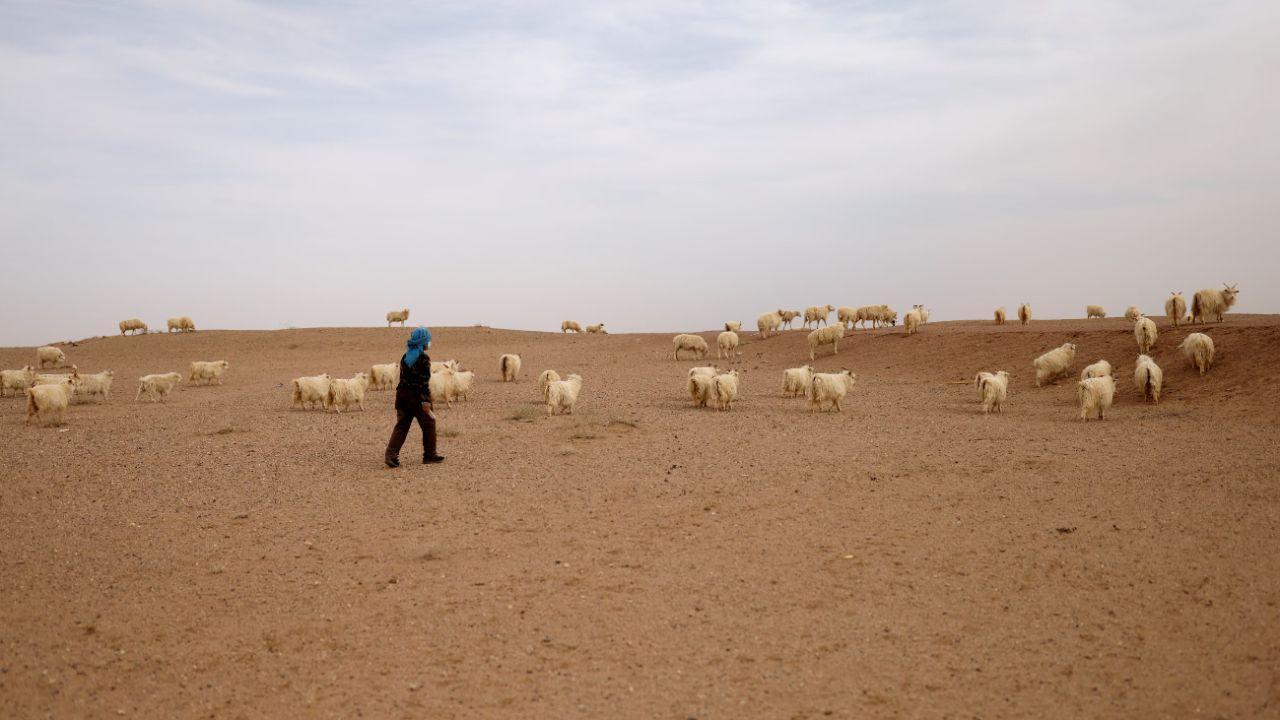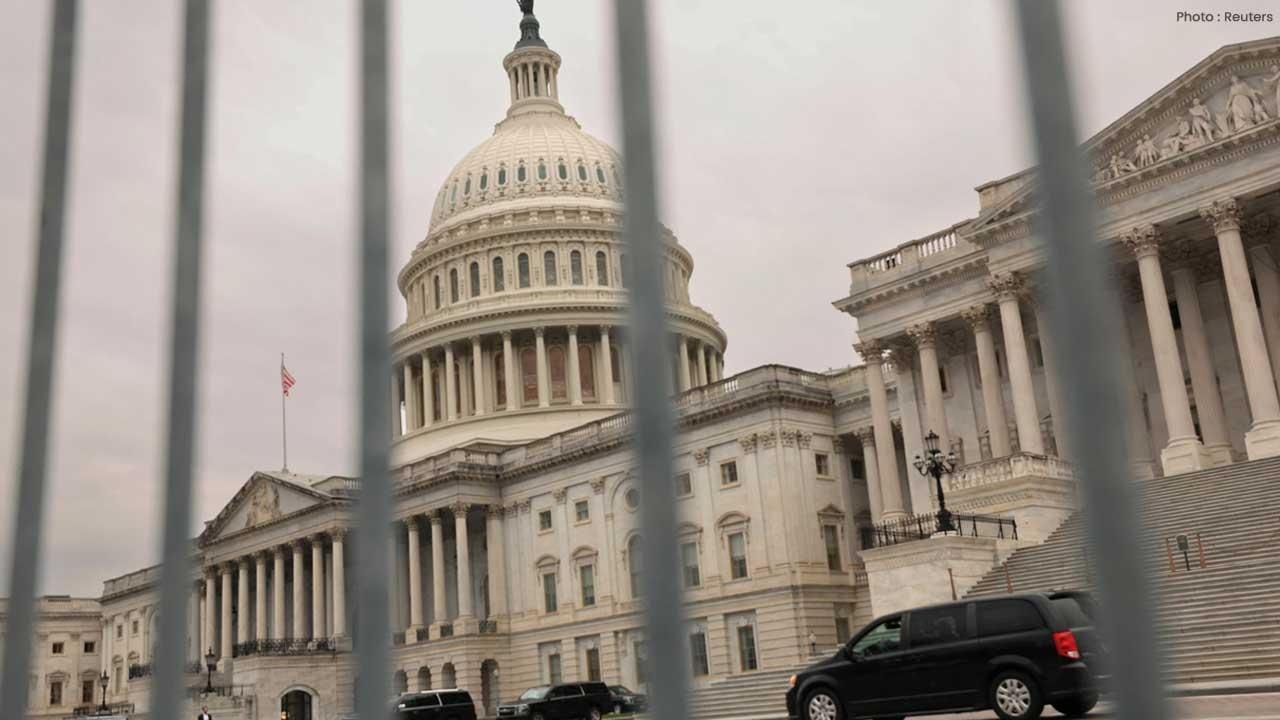
Post by : Priya
Photo:Reuters
In a world already grappling with rising temperatures, water scarcity, and environmental degradation, a quieter but equally dangerous threat is sweeping across continents—sand and dust storms. These storms, which many once considered a seasonal nuisance limited to deserts, have now become a growing global hazard. The United Nations, in a recent high-level summit held in Samarkand, Uzbekistan, sounded the alarm over the escalating danger posed by sand and dust storms (SDS), revealing that more than 330 million people are directly affected by these powerful natural phenomena.
From the dry plains of the Middle East to the farmlands of Central Asia, the reach of these storms is expanding. As the wind lifts billions of dust particles into the air, it not only erodes soil and damages crops but also enters human lungs, causing serious health problems. This editorial explores the increasing frequency of sand and dust storms, the regions most affected, their root causes, and the urgent steps needed to address this environmental crisis.
The Growing Danger of Sand and Dust Storms
Sand and dust storms are not new. For centuries, they have swept across deserts and drylands, shaping landscapes and ecosystems. However, what is new—and deeply worrying—is the rapid increase in their frequency, intensity, and spread. According to data presented by the United Nations Convention to Combat Desertification (UNCCD), more than 25% of the global population now lives in areas vulnerable to SDS, and the number is rising each year.
The UN’s Deputy Secretary-General, Amina Mohammed, described these storms as a “silent and underestimated threat,” one that impacts human health, agriculture, water security, and even international transport. “These storms do not recognize borders. What begins in one country can travel thousands of kilometers, affecting people and ecosystems far away,” she said.
Health at Risk: The Invisible Particles That Harm Millions
One of the most dangerous aspects of sand and dust storms is invisible to the naked eye. While large clouds of dust may appear dramatic and overwhelming, it is the tiny particles of PM10 and PM2.5—fine dust particles with diameters of 10 micrometers or less—that cause the most serious health effects. These microscopic pollutants can penetrate deep into the lungs, entering the bloodstream and triggering a wide range of health issues.
Doctors and health experts warn that exposure to these fine particles can lead to:
The World Health Organization has acknowledged that the health impact of SDS is comparable to major industrial air pollution events, especially in urban areas near deserts or drylands. In many regions, people are forced to stay indoors for days, schools are closed, and transportation systems are halted due to poor air quality and visibility.
Agricultural Damage: Dust Storms Threaten Food Security
Beyond human health, sand and dust storms are wreaking havoc on agriculture. Farmlands covered in thick layers of dust lose their ability to grow crops. Valuable topsoil is blown away, reducing the fertility of the land. In countries like Iran, Iraq, and Turkmenistan, farmers report losing entire seasons of crops to dust storms. Even in China’s northern provinces, which are far from major deserts, dust storms have destroyed fruit orchards and greenhouses.
According to the UNCCD, agriculture accounts for up to 80% of the economic losses caused by SDS. The damage includes:
Loss of crops due to dust burying or damaging plants
Soil erosion that makes farmland less productive
Clogged irrigation systems
Contaminated water supplies
Increased cost of maintaining agricultural machinery
In rural communities, where people depend heavily on farming for income and food, the impact of frequent dust storms can be devastating. Many families are forced to abandon their lands and move to cities, contributing to rising urban poverty.
The Role of Climate Change and Human Activity
Experts say that the recent increase in dust storms is not just a result of natural processes. Human activity plays a major role, particularly in how land is used and managed. The overgrazing of livestock, deforestation, unsustainable agriculture, and construction in dry areas all contribute to the breakdown of soil, making it more likely to be picked up by the wind.
At the same time, climate change is amplifying the problem. As global temperatures rise and rainfall patterns shift, more land is becoming arid and prone to desertification. Droughts have become more frequent and longer-lasting, and once-productive land is turning to dust.
The Sahel region in Africa, for example, has seen a surge in SDS over the last decade due to both changing climate and poor land practices. Similar trends are being observed in India’s Thar Desert, the dry zones of Central Asia, and parts of Australia.
A Cross-Border Problem: No Country is Safe
One of the reasons the United Nations is urging immediate international action is that sand and dust storms know no borders. A storm that starts in the deserts of Saudi Arabia can affect cities in Pakistan. Dust from North Africa regularly travels across the Atlantic Ocean, affecting air quality in the Caribbean and even as far as Florida in the United States.
In March 2025, a powerful dust storm that began in Uzbekistan caused air pollution alerts in western China and eastern Kazakhstan. A few weeks later, another storm from the Middle East blanketed the skies over Iran, Iraq, and Syria, turning the air orange and forcing thousands into hospitals.
Such examples show the urgent need for regional cooperation, early warning systems, and joint action. The UN emphasizes that countries must share data, prepare common action plans, and create systems to help each other respond quickly to such events.
The Samarkand Summit: UN Calls for Action
The recently concluded Samarkand summit, organized by the UNCCD, brought together leaders, scientists, and environmental experts from over 40 countries. The message was clear: the world must act now.
The summit focused on:










NBA Friday Recap: Powerhouse Wins for Miami, LA, Milwaukee, and Clippers
Miami, LA Lakers, Milwaukee, and Clippers triumphed in a thrilling NBA Friday, showcasing standout p

Doncic Shines with 49 Points in Lakers' 128-110 Victory over Timberwolves
Luka Doncic dazzles with 49 points as the Lakers secure a 128-110 win against the Timberwolves, show

Kings Triumph Over Jazz 105-104 with Last-Minute Sabonis Effort
The Sacramento Kings edged out the Utah Jazz 105-104, with Domantas Sabonis making the decisive shot

Argentina's Friendly Match Against India Delayed, New Date to be Announced
The friendly match between Argentina and India in Kochi has been postponed due to FIFA approval dela

Rohit and Kohli Conclude ODI Journeys in Australia with a Victory
Rohit Sharma and Virat Kohli bid adieu to Australian ODIs with a final win, forming a 168-run partne

George Russell's Wrestling Mask Antics at Mexican Grand Prix
George Russell donned a wrestling mask to enjoy the Mexican Grand Prix from the stands, providing a